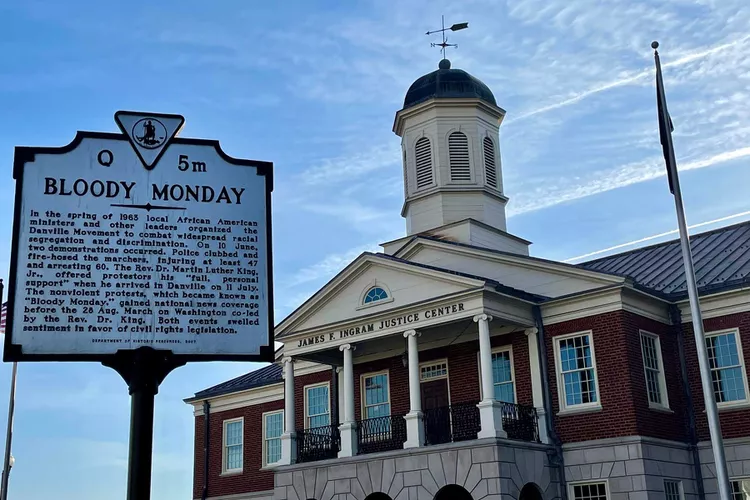Civil Rights Trail: Hidden Gems to Visit
Stretching across 15 states and the District of Columbia, the Civil Rights Trail tells the story of this decades-long movement for equality through museums, historical markers, and more. Travelers interested in exploring the pivotal locations of the U.S. civil rights movement can look to the interactive Civil Rights Trail website to guide their plans as they choose from 60 featured destinations.
To help narrow down your search for meaningful travel experiences, here are a few lesser-known but particularly noteworthy small towns along the Civil Rights Trail.
Danville, Virginia

Known as “the last capital of the Confederacy” during the 1960s, Danville was added to the Civil Rights Trail on Feb. 1, 2022. Here, visitors will find the Danville Museum of Fine Arts and History, which once served as a public library. In 1960, a sit-in was held in Danville; however, in response, town officials shut down the library rather than allow Black visitors to access it. This closure led to several other demonstrations for racial equality that were met with strong resistance.
Today, travelers can visit the Danville Museum of Fine Arts and History to see the exhibit titled “The Movement,” detailing the local fight for civil rights. This permanent exhibit includes powerful testimonies from protestors and leaders, including Martin Luther King Jr., who visited Danville amid the unrest.
Sarasota, Florida

Florida is famous for its beautiful beaches; however, prior to the Civil Rights Act of 1964, Black residents had limited access to these 825 miles of coastline. In 1955, Sarasota’s NAACP president Neil Humphrey Sr. organized “wade-ins,” a new form of protest where residents of the Black community of Newtown drove en masse to Lido Beach to swim and enjoy the shoreline. This demonstration marked a pivotal moment in the civil rights movement, paving the way for further action across coastal areas.
Visitors to Sarasota can learn more about Newtown’s essential role in the fight against segregation by exploring the Newtown African American Heritage Trail, which features 15 historical markers along the route taken by protestors. Additionally, as part of the Newtown Alive initiative, travelers can participate in guided tours of the area.
Albany, Georgia

In November 1961, local activists formed the Albany Movement, a crucial campaign to eliminate segregation across Albany, Georgia. This coalition of the Student Nonviolent Coordinating Committee, the NAACP, and other groups sought to teach nonviolent protest tactics and organized mass demonstrations throughout the city. Martin Luther King Jr. and the Southern Christian Leadership Conference participated in this movement for a time.
Travelers keen on learning more about Albany’s significant role in civil rights can visit the Albany Civil Rights Movement Museum at Old Mount Zion. The facility features a museum, a research center, and the historical Old Mount Zion Baptist Church, which served as meeting grounds for the Albany Movement. Additionally, a historical marker stands at Shiloh Baptist Church to commemorate the day King addressed over 1,500 attendees.
Greensboro, North Carolina

During the civil rights movement, sit-ins emerged as a powerful tactic to challenge segregation, beginning in Greensboro. On Feb. 1, 1960, four Black students from the Agricultural & Technical College of North Carolina initiated a sit-in at Woolworth’s lunch counter, where they were denied service. They remained seated until the store closed, sparking a movement that eventually involved over 300 students participating in similar protests across the region.
The original Woolworth’s building has been transformed into the International Civil Rights Center & Museum, honoring the A&T Four and the sit-in movement they ignited. The museum displays the original counter where they sat and hosts various exhibits on the civil rights struggle. For those visiting Greensboro, the February One monument serves as a tribute to the A&T Four: David Richmond, Franklin McCain, Ezell Blair Jr. (Jibreel Khazan), and Joseph McNeil.





